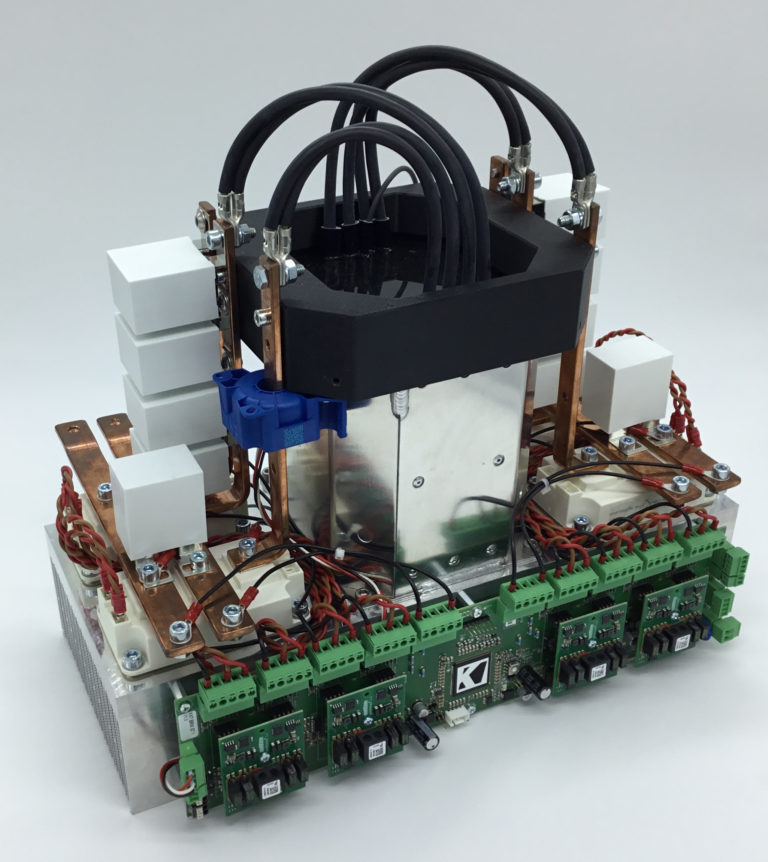Our modular system allows you to put together an optimal system for your power electronics that meets your requirements, from a wide range of existing technologies and solutions. We are experts in controlling various semiconductor technologies such as SiC, GaN, IGBT and Si-MOSFET in power classes ranging from a few 100 W to several 100 kW.
Our modular system includes various power conversion topologies such as AC/DC converters, boost converters, buck converters, bidirectional resonant converters and power controllers, power converters and inverters, as well as drive controllers for a wide range of motor technologies.
This modular system enables rapid development and thus the rapid implementation of your project – 100% tailored to the application. The option of integrating further functionalities on a single assembly creates decisive market advantages for our customers. Our know-how enables us to realize both highly innovative and unbeatable-in-price concepts.
Discover our configurator to put together your individual power electronics solution:

DC/DC resonant converters for galvanic isolation use a resonant circuit, typically consisting of inductors and capacitors, to efficiently transfer energy between the input and output. The circuit operates at a resonant frequency at which losses are minimized. The reduction of switching losses and EMI contributes to a higher overall efficiency of the converter. Compared to conventional PWM-based DC/DC converters, the design of a resonant converter is more complex as the resonance conditions must be precisely tuned. Resonant operation allows higher switching frequencies to be achieved, which leads to a reduction in the size and weight of passive components (such as transformers and filters). The resonant technology also ensures that the voltage and current peaks that occur in conventional switching processes are reduced, resulting in less stress on the components.
The DC/DC converter topologies are fundamental components in the conversion of electrical power.
Similarities and differences between boost/decompression adjusters
Similarities:
Differences:
Combination:
|
|
IGBT Version
|
SiC Version
|
|---|---|---|
|
Input voltage Ue
|
2x 650 VDC 650 VDC – 750 VDC
|
2x 720 VDC 650 VDC – 750 VDC
|
|
Output voltage Ua
|
100 VDC- 1000 VDC 25 VDC- 100 VDC (optional)
|
100 VDC- 1400 VDC 25 VDC- 100 VDC (optional)
|
|
Output current Ia
|
Connection in series 160 A or parallel 320 A
|
Connection in series 350 A or parallel 700 A
|
|
Power
|
100 kW
|
250 kW
|
Can we support you with personal assistance? If so, please call us or send us a message.
KNESTEL Technologie & Elektronik GmbH
Osterwalder Straße 12
D-87496 Hopferbach
Phone: +49 (0) 83 72 – 70 80![]()
© Copyright 2021 – KNESTEL Technologie und Elektronik GmbH